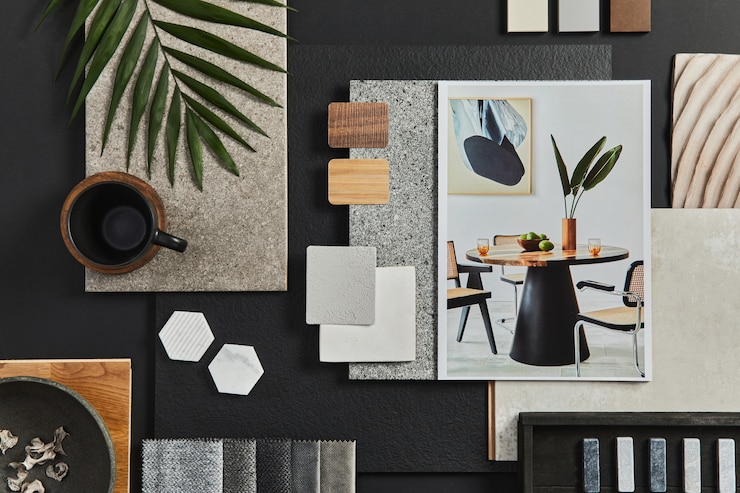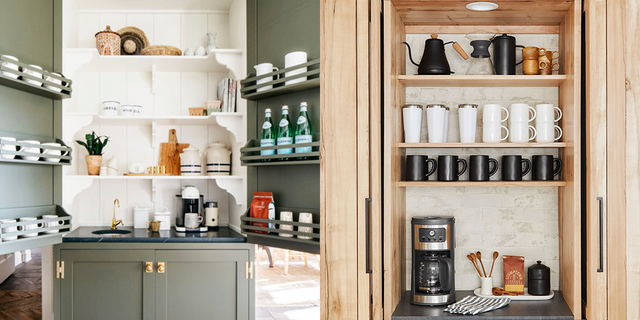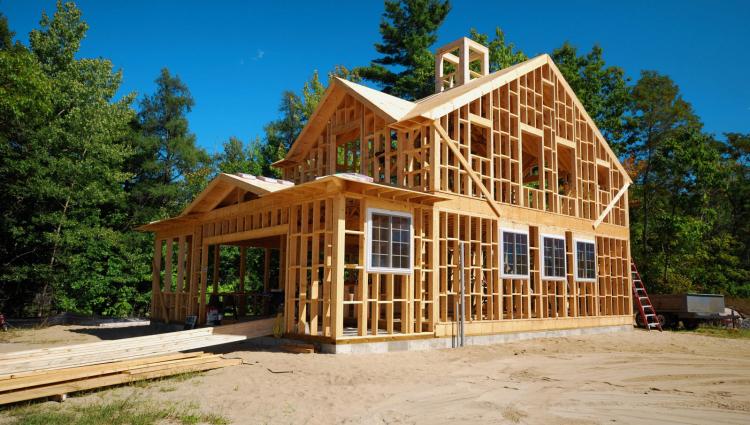As the new coronavirus continues to spread, cities and countries around the globe have ordered citizens to retreat to their homes—and stay there. As we shelter in place, the rooms where we once spent few waking hours now encapsulate our entire existence—and this short-term recalibration may have long-term effects. We spoke with eight architects and designers to find out what the COVID-19 pandemic means for the future of home design—read on for their thoughts.
Dan Weber, architect and founder of Anacapa Architecture
Off-Grid Guesthouse by Anacapa Architecture
Like millions of others, everyone in my company is now working from home. Video calls from home give us a very intimate window into each other’s lives. We see kids in the background bouncing on the couch, dogs barking, people in their pajamas, significant others…it’s been a bonding experience. Almost everyone has been loving it, and most of us have said that we feel more productive due to fewer interruptions than normally happen in our open-office environment.
However, this level of total isolation is extreme. We need to be around each other—we need to draw together on paper, build models, walk to the coffee shop, print things, throw things, look at books, hug people, and do normal human things. When this ends, we will recalibrate, but it won’t go back to the way it was before.
This experiment, especially if it lasts a long time, is going to completely redefine our ability to work from home. Companies, including us, are being forced to learn how to accommodate this, and we will find the silver lining. I think this is going to allow us more flexibility to enjoy our homes that we spend so much time creating, while still holding ourselves and our teams accountable for being effective and productive.
I can imagine, with millions of employees all working remotely, that after companies learn how to effectively work from home, they will start to reevaluate how necessary their physical office spaces are, and how much money can be saved if employees work from home at least part of the time. Some may find that they only need half as much space as they did before, and that they only need a physical office for staff meetings and in-person client meetings. But in order to make this work, there will need to be serious changes to the “home office” idea. This health crisis could possibly have a long-term effect on how important a home office—or at least a working nook—is in residential design.
Maziar Behrooz, architect and founder of MB Architecture
Amagansett Modular House by MB Architecture
We’re already seeing some short-term effects: people are now spending more time at home, and finally focusing on long-overdue improvements (bigger pantries, more defined work spaces, and adding/upgrading guest bedrooms). More generally, I see a very dramatic surge in interest in our prefab buildings, from all over the country (and in fact, the world, based on our web stats). And finally, there’s a surge of city residents who’ve moved out to the country and are looking for a permanent second home. My own sense of how this affects future home design is that the fundamentals of domestic life—centered around life at home versus perceptions of luxury—will prevail. And that would be a very good thing.
Robert Sweet, founder and creative director of Ras-A Studio
Walk Street House by Ras-A Studio
The pandemic has given people (who might not already have experience with it) a large dose of working remotely. This might offer businesses and employees alike a glimpse of its potential and staying power. It could have us rethink what a home office is—and its priority in the program of a home.
Bryan Young, founder and principal of Young Projects
Carraig Ridge House by Young Projects
“Well design” standards will incorporate new criteria for the residential market. This will inspire architects and designers to consider new ways we can think critically and creatively about domestic environments. For example, the importance of green roofs might be completely reconsidered…which, in turn, may necessitate structural retrofitting for existing buildings, and increased standards for new residential buildings.
Joel Sanders, founder and principal of Joel Sanders Architecture
Millennium House by Joel Sanders Architecture
Retro futurism. I see a return to a high-modernist aesthetic championed by architect Le Corbusier at Villa Savoye: sparkling white rooms, tile, and porcelain fixtures that convey a visual sense of health and hygiene. Think of a sink that greets visitors at the entrance to Villa Savoye.
In regards to the home office, over the past decade digital technology has already transformed homes into live/work spaces where, over the course of a day, people assume a variety of personal and professional roles. The pandemic now requires almost all of us to work from home, putting pressure on all of us to retrofit our homes with technology.
Barbara Reyes, director of design, interiors, and branding at Frederick Tang Architecture
Sackett Street residence by Frederick Tang Architecture
There are 8.55 million people living in NYC—the largest amount in any city in the United States. The average space per person in the city is around 531 square feet. This opens our eyes to problems with affordable yet available housing, and how we can resolve space in an efficient way so residential living does not feel cramped—one of the reasons why New Yorkers leave their spaces and go out. We are human and still need connection and social activity. There will always be a need for communal spaces, but personalizing each home will be very important. This approach will make sure that people are comfortable in their own space without the anxiety of wanting to leave.
Michael K. Chen, founder and principal of Michael K. Chen Architecture
Park Avenue Prewar Apartment by Michael K. Chen Architecture
In previous crises, the home was a refuge, a place to retreat to. Now, it’s quickly becoming a place that people are looking forward to leave on a regular basis. I wonder if private space will take on some of the dimensions of the public space that so many of us are missing. At the same time, I think that the crisis has laid bare the shortcomings of our social fabric and safety net. Certainly in New York, there is the near-universal awareness that public schools not only educate our children, but also feed them. I hope that this awareness informs how schools are resourced and designed in the future
Patrick Lam, founder and creative director of Sim-Plex Design Studio
Arc Village Studio by Sim-Plex Design Studio







